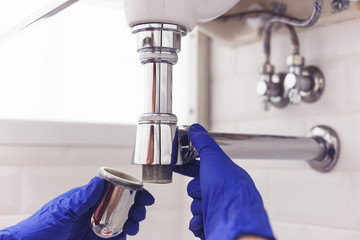Plumbing is the field of engineering that uses pipes, valves, tanks, and other apparatuses to carry fluids for a wide range of applications. The most common plumbing applications are in homes and offices, where pipes convey water and wastewater to various fixtures. Nevertheless, there are many other uses for plumbing. These include the maintenance of water supply systems and the installation of drain systems.

Plumbing is an important part of any construction plan, as it ensures that water is clean and safe for use. It has been a fundamental part of buildings since ancient times. The plumbing industry is growing by leaps and bounds, and professional associations have emerged to regulate the profession. This makes plumbing an important part of every construction project, ensuring that the water used for drinking, washing, and cooking is clean and safe.
Plumbing contractors are often hired to consult during the planning phases of a construction project. These experts can help ensure that new construction and maintenance comply with code, including the ADA. They can also perform final inspections to make sure that the plumbing work has been done correctly. Whether you are planning a new home or remodeling an old one, plumbing contractors can provide the expertise you need to complete your project.
Plumbing is essential for connecting utility systems. Water pipes are often made of copper or plastic. These pipes carry treated water from the municipal water system inside buildings. Copper is the most common material used in plumbing. Copper pipes are corrosion-resistant and can last up to 50 years. Copper pipes are often the best choice for piping in homes and businesses. These pipes are not only durable but also safe for the environment. They are the best choice for protecting water quality.
Plumbing is an integral part of every home. Without it, you can’t do many of the activities you normally do every day. Plumbing is responsible for transporting water throughout a home, cooling it, and heating it. However, many people don’t understand the details of plumbing and how it works. Luckily, there are many resources available for homeowners and professionals to learn more about this field.
Plumbing is an important industry that employs millions of people worldwide. It not only provides jobs but also delivers clean water and removes waste, preventing the spread of disease and protecting the population. Many advancements in plumbing are making it possible to save lives in developing countries. If you are planning a remodel, it is important to consider the plumbing codes in your area.
Plumbing involves installing pipes and fixtures in buildings. It also includes maintaining and modifying appliances and the ventilation system. It does not include the drilling of wells, installing water-softening equipment, or manufacturing plumbing fixtures. Plumbing systems include three main parts: an adequate water supply, a drainage system, and fixtures. In the early days, plumbing systems were mostly made of lead pipes. These pipes convey water from a water source and transport it to the building.
Choosing the right pipe depends on the plumbing systems in your home. PVC pipes are another common choice. These pipes are flexible and can be easily installed. They are also highly corrosive-resistant. This makes them ideal for homes in colder regions and piping hot water. Furthermore, they can be easily shaped, which makes them an attractive option for many customers.
If you are planning to build a house, you need to choose the right type of drainage system. A house drain is usually four inches in diameter. Various materials are used for house drains, including cast iron, vitrified clay, plastic, and lead. For a DWV system, PVC and ABS pipes are the best options. Ensure that the pipes have the right angle for proper flow. Also, make sure to scour the pipe to remove any solid matter that might be stuck in the pipe.
Plumbing systems have been used for centuries to help people maintain healthy and clean living environments. In fact, aqueducts date back to the Roman era. Some parts of some countries still have Roman aqueducts. Regarding sanitation, the first plumbing systems were primitive and inefficient. People were plagued by typhoid fever because of contaminated water.